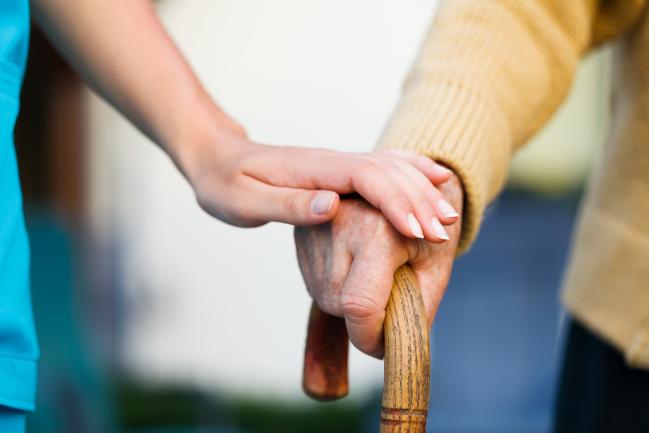Objective Tests of Frailty Surpass ‘Eyeballing’ in Patients With Valvular Disease
Fewer patients are considered frail when clinicians make the extra effort to assess factors like handgrip strength and walking speed, researchers say.

While the so-called eyeball test—getting that gut first impression—is valuable when attempting to gauge the frailty of a patient with valvular heart disease, objective metrics such as handgrip strength and 15-foot walk test are more informative, new research confirms.
Nearly all centers are already seeking out these sort of data, but the choice to do certain tests “is not something that is written in stone. There are many ways to assess frailty,” senior author Mario Gössl, MD (Minneapolis Heart Institute, MN), told TCTMD.
What this analysis demonstrates is that it’s “absolutely” worth taking the extra time to go beyond eyeballing, Gössl said. “You will be surprised how often you might downgrade your actual frailty assessment, and that’s of course important for your procedural planning.”
But “even if you use [objective measures], you may not necessarily be forced to use these data in your overall assessment,” he added, noting that experienced physicians may combine their subjective judgement with the data when arriving at a decision on frailty.
Handgrip Strength, 15-Foot Walk Time
Published online earlier this week as a letter in the Journal of the American College of Cardiology, the prospective study involved 100 patients (mean age 77 years; 60% men) who were referred to the Minneapolis Heart Institute for either transcatheter valve therapy or cardiac surgery and were evaluated by 1 of 11 physicians (10 cardiologists, 1 cardiac surgeon).
Each patient’s degree of frailty was first judged according to eyeballing alone and graded on a Likert-type scale of 1 to 7 (with ≥ 4 being frail) and their surgical risk was estimated (low, intermediate, high, or prohibitive). Then, patients were further evaluated using objective measures of frailty: 15-foot walk time, handgrip strength, the Katz index, and the 12-item Short Form Health Survey quality-of-life questionnaire. And in a final step, providers were then informed about the objective data and asked to repeat their frailty and surgical risk assessments.
This kind of subjective impression that you get—I think that’s fooling us. Mario Gössl
Overall, frailty score on the Likert-type scale decreased slightly but significantly once providers had a chance to reassess their first instinct (mean 3.7 vs 3.4; P = 0.003). But when patients were grouped as frail versus not, the net reclassification rate was 38%, and 22% of patients had a change of 2 points or more.
Handgrip strength was the factor that most influenced reclassification. Nearly one-quarter of the 49 patients initially deemed frail passed handgrip testing then were considered not frail. Conversely, 29% of the 51 patients thought not to be frail in fact failed handgrip testing, putting them in the frail category. The 15-foot walk test was also influential: 43% of the initially frail patients passed the test, with 81% of them being reclassified. Six percent of the not-frail group failed the walk test, with 66% of such patients being reclassified as frail.
In addition, objective testing led to 26% of patients either being downgraded or upgraded into a different category of surgical risk.
Lower body mass index, older age, and higher calculated STS score all were associated with overestimation of frailty during eyeballing. “It’s kind of interesting that this first glance that we get of a patient, which is usually the body mass index and overall age, I’d say—this kind of subjective impression that you get—I think that’s fooling us,” Gössl said.
Caitlin E. Cox is News Editor of TCTMD and Associate Director, Editorial Content at the Cardiovascular Research Foundation. She produces the…
Read Full BioSources
Ahmed A, Sorajja P, Pai A, et al. Prospective evaluation of the eyeball test for assessing frailty in patients with valvular heart disease. J Am Coll Cardiol. 2016;68:2911-2912.
Disclosures
- Gössl reports no relevant conflicts of interest.


Comments